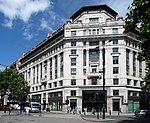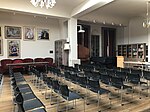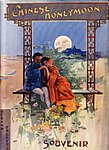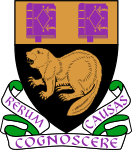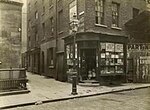The London School of Economics and Political Science (LSE or the LSE) is a public research university located in London, England, and a constituent college of the federal University of London. Founded in 1895 by Fabian Society members Sidney Webb, Beatrice Webb, Graham Wallas, and George Bernard Shaw, LSE joined the University of London in 1900 and established its first degree courses under the auspices of the university in 1901. LSE began awarding its degrees in its own name in 2008, prior to which it awarded degrees of the University of London.
LSE is located in the London Borough of Camden and Westminster, Central London, near the boundary between Covent Garden and Holborn. The area is historically known as Clare Market. LSE has more than 11,000 students, just under seventy percent of whom come from outside the UK, and 3,300 staff. It had an income of £391.1 million in 2020/21, of which £32.8 million was from research grants. One hundred and fifty-five nationalities are represented amongst the LSE's student body and the school had the second highest percentage of international students (70%) of the 800 institutions in the 2015–16 Times Higher Education World University Ranking. Despite its name, the school is organised into 25 academic departments and institutes which conduct teaching and research across a range of pure and applied social sciences.LSE is a member of the Russell Group, Association of Commonwealth Universities, European University Association and is often considered a part of the "Golden Triangle" of top universities in South East England. The LSE also forms part of CIVICA – The European University of Social Sciences, a network of eight European universities focused on research in the social sciences. In the 2014 Research Excellence Framework, the school had the highest proportion of world-leading research among research submitted of any British non-specialist university.LSE alumni and faculty include 55 past or present heads of state or government and 18 Nobel laureates. As of 2017, 27% (or 13 out of 49) of all Nobel Memorial Prizes in Economics have been awarded or jointly awarded to LSE alumni, current staff, or former staff, who consequently comprise 16% (13 out of 79) of all Nobel Memorial Prize laureates. LSE alumni and faculty have also won 3 Nobel Peace Prizes and 2 Nobel Prizes in Literature. Out of all European universities, LSE has educated the most billionaires (11) according to a 2014 global census of US dollar billionaires.

